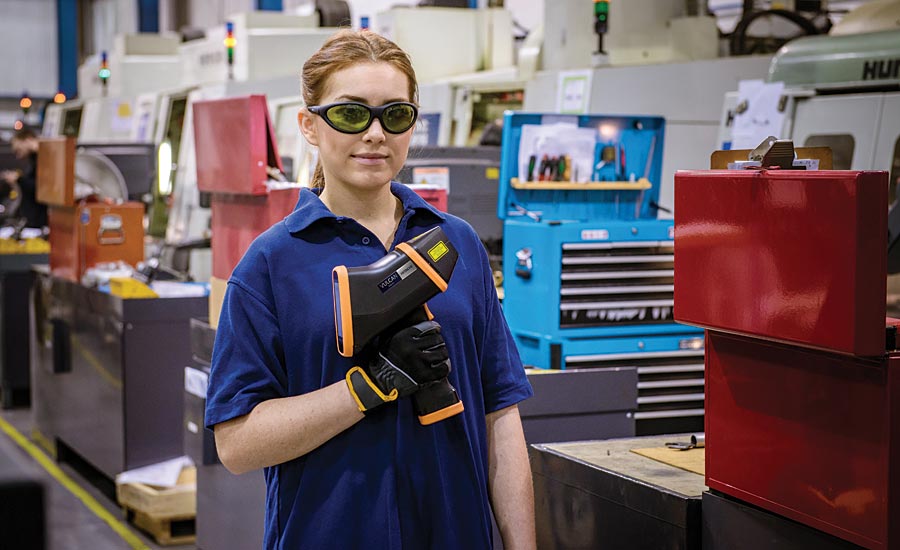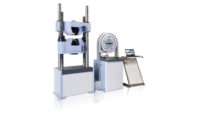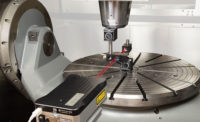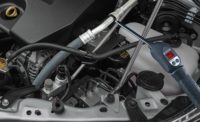Earlier this year, the U.S. Environmental Protection Agency announced it’s working on new rules to decrease NOx and other pollutants present in vehicle emissions. January’s announcement will not be the only major one relating to worldwide vehicle emissions, with China 6a set to come into force this year. Similarly in Europe, the EU’s next phase of emissions standards (Euro 6) comes into effect in 2021, under which the average CO2 emissions of new cars can be no more than 95g/km under real driving conditions. This limit will drop by a further 15% in 2025, and 37.5% in 2030.
These are part of a long-term trend with evolving regulations leading to modern cars and trucks being approximately 99% cleaner for common pollutants (hydrocarbons, carbon monoxide, nitrogen oxides and particle emissions) than their 1970 equivalents (source EPA).
As global legislation becomes increasingly stringent, light-weighting is a key element that will enable automotive OEMs to continue to meet this next generation of emissions targets: each 100 kg shaved off a vehicle’s weight cuts (on average) 8.5g of CO2 per 100km. Adopting a light-weighting strategy is not only essential for internal combustion engine vehicles to reduce emissions and get more out of every drop of fuel. Weight reduction also features highly on the agenda for electric vehicle (EV) manufacturers striving to increase range from a single charge.
But how do you cut vehicle weight without compromising material integrity and passenger safety, and without affecting the bottom line?
Materials science breakthroughs
Two of the key metals that will allow weight reduction are aluminum and magnesium. Aluminum weighs about a third of steel, while magnesium is the lightest structural metal—75% lighter than steel and 33% lighter than aluminum—and is abundant and easily recyclable too. Both metals are in widespread automotive use already. BMW recently used aluminum to more than halve the weight of the tailgate on its 5-Series range; and Opel (formerly a GM company, now part of PSA group, Europe’s second biggest car maker) used magnesium to replace steel in the Vectra’s dashboard support shaving 5 kg in weight.
It is therefore not surprising that, by 2022, the average car is expected to contain around 100 kg of aluminum as a replacement for steel and other, heavier materials. The global market for magnesium and aluminum-alloy automotive components is predicted to be c.$48 billion by next year, growing at a c.7% CAGR.
But these materials innovations cannot come at the expense of safety. Ductile strength, structural rigidity, corrosion- and thermal-resistance remain crucial properties for automotive components. By themselves, these elements are far from perfect.
This is evident in the physical properties of aluminum. By itself, aluminum can be relatively weak. While the introduction of lithium significantly increases its tensile strength, Al-Li alloys can be brittle and subject to deformation and fracture. The machinability of an Al-Li alloy can be improved with the addition of phosphorous and sulphur, but this needs to be strictly controlled as both have a detrimental effect on corrosion resistance.
Similarly, magnesium is also brittle, with the addition of rare earth elements (REEs)—such as dysprosium, praseodymium and ytterbium—needed to improve this. The metal also lacks the creep resistance of aluminum.
Materials research and development is tackling these issues. In 2017, scientists at Melbourne’s Monash University, announced a process to change the microstructure of magnesium to make it malleable at room temperature. Also in 2017, researchers at the Pacific Northwest National Lab published details of a novel extrusion process that greatly improves the energy absorption and ductility of magnesium through the creation of microstructures in the magnesium, making it more feasible for a larger range of car parts.
Similar materials developments are occurring with other metals used in automotive manufacture too. Steel makers, in a bid to regain market share, are developing super-lightweight steels that are stronger, cheaper and (almost) as lightweight as aluminum. We’re expecting these to reach the market in 2021.

New analytical technologies are emerging to enable the automotive industry to ensure materials meet quality requirements in a competitive and rapidly evolving industry.
Materials analysis challenges
The adoption of advanced materials brings crucial materials analysis and quality control challenges across the automotive supply chain. Residual element traces can significantly impact the properties of an alloy and minute changes in the relative volumes of an element significantly affect the ductility or the corrosion resistance of a component produced. Additionally, the increased use of recycled metal by foundries may lead to more unfamiliar elements being introduced into melts.
The need to analyze melt chemistry down to the ppm level is crucial for OEMs who must ensure their vehicles meet the exacting standards—especially given the immediate financial and long-term reputational costs of a recall.
New analytical technologies are emerging to enable the automotive industry to ensure materials meet quality requirements in a competitive and rapidly evolving industry. Three key technologies are available to quantify the elemental ratios in these metals: OES (optical emission spectroscopy), XRF (X-ray fluorescence) and LIBS (laser induced breakdown spectroscopy).
Optical emission spectroscopy (OES)
How it works: OES excites the molecules in a sample using electricity to measure the relative proportions of each element in a sample. There are two variants: spark—a series of multi-discharge events where the voltage of the electrode is switched on and off; and arc—a single on/off event similar to a lightning strike.
What it measures: The technique can only be used to test metals; however, it can measure non-metallic elements within them, notably carbon, boron, phosphorous and nitrogen in steel.
Strengths: OES devices offer the highest levels of accuracy, with detection to very low levels for all the important elements.
Weaknesses: OES will leave a burn mark on the sample. It also requires argon gas canisters, unless used with an arc probe.
X-ray fluorescence (XRF)
How it works: The technique uses X-rays, which are generated by the source and directed at the sample, to excite the molecules at the surface of the sample. Atoms in the sample react and generate secondary X-rays, which are collected and processed by a detector.
What it measures: the XRF technique is ideally suited to quality testing lightweight steels. Additionally, it is able to measure solids, liquids and powders, including coating thickness (critical in several aspects of the automotive sector). XRF analyzers are ideal for accurate chemical composition, including identifying trace and tramp elements.
Strengths: XRF is an established and well-trusted analytical technology and has been used for over 45 years in benchtop, portable and, more recently, handheld materials analysis. Of the three techniques, it is the only nondestructive form of material analysis used often for PMI (positive material analysis).
Weaknesses: XRF technology cannot measure all elements, including lithium and boron, which are both used to form aluminum alloys.
Laser induced breakdown spectroscopy (LIBS)
How it works: LIBS uses a laser diode to emit a small, powerful laser onto the surface of a sample and dissipate a small amount to form an energized plasma. As the plasma cools, each element in the sample emits a characteristic wavelength that can be measured using a spectrometer.
What it measures: Samples can be conductive or non-conductive materials. The technology is particularly good for measuring aluminum alloys.
Strengths: LIBS is the newest and fastest of the three methods, with a measurement performed in as little as a single second.
Weaknesses: The LIBS technique needs a solid surface that is clear of dirt and contaminants. It is a destructive testing method—albeit less so than OES—with the laser burn usually considered to be surface roughness rather than classed as resulting in a defect to a component. Accuracy and reliability of results, especially for carbon, is not at the same low detection levels as with OES.
Conclusion
The continued development of analytical technologies is making materials testing easier for companies across the automotive industry, allowing them to adopt the latest materials technologies with confidence and so keep up with new regulations and innovations in the automotive industry.
But it is vital that these analyses take place across the entire supply chain. Although this may add to delays in processing incoming materials, which eats into working capital, the use of a material with an unacceptable level of impurity can be far more costly—both to a business’s bank balance and to its reputation. As such, choosing the right technologies for every stage of the automotive development process is critical, from foundries, fabricators and metal component producers to electronics suppliers and recycling facilities, back to foundries.
The application of analytical techniques like OES, XRF and LIBS, and the continued innovation in this sector will help automotive companies maintain a competitive edge amidst industry’s fast-paced evolution. Q



